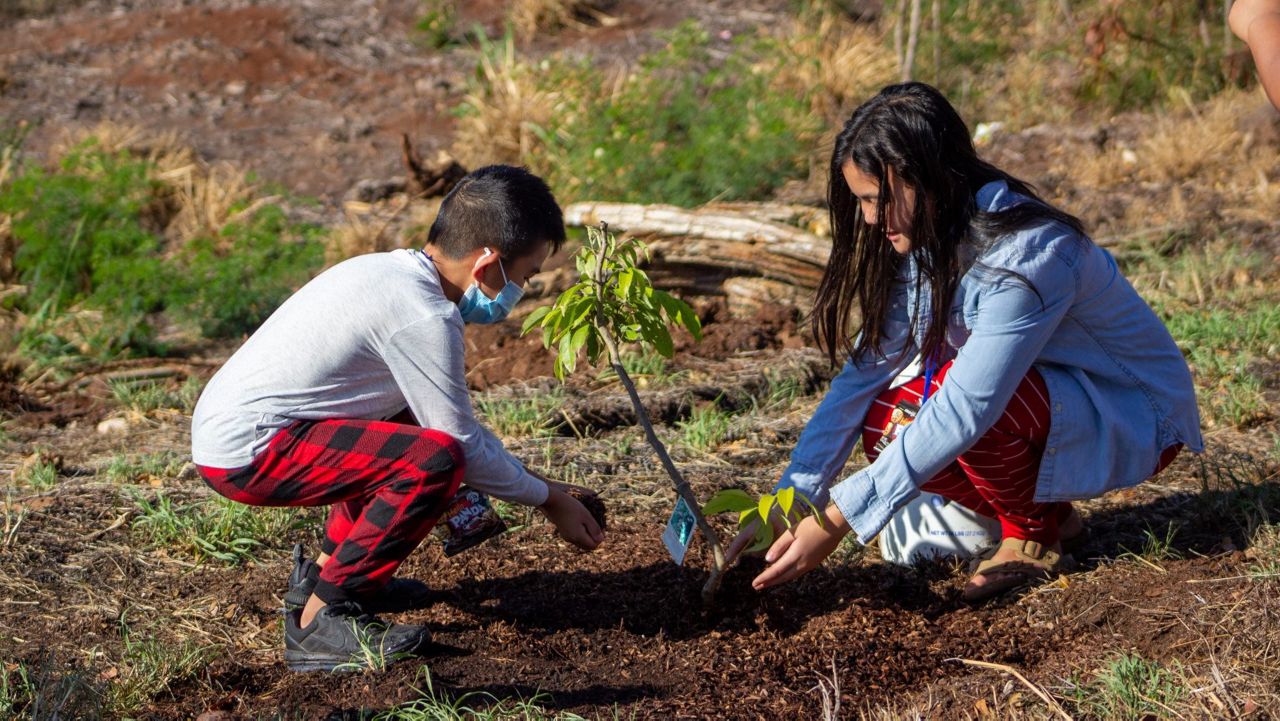The state Department of Land and Natural Resources has awarded grants to three local nonprofit organizations for tree-planting projects at public school campuses.
The funding comes via the U.S. Forest Service’s 2022 Bipartisan Infrastructure Law Grant.
According to DLNR, the projects advance Hawaii Forest Action Plan priorities in urban and community forestry and will contribute to the state’s pledge of conserving, restoring or growing 100 million trees by 2030.
Malama Learning Center’s project, Promoting Tree Planting & Care Through Education to Build Resilient Communities in Leeward Oahu, equips local high school students and their families with the tools to mitigate the impacts of climate change through education and career-building skills.
The University of Hawaii at Manoa’s Trees in Schools project Students Propagating Ulu Trees for Schools on Oahu supports students from Kaimuki Middle School in propagating ulu trees to distribute to Title 1 schools around the island. As part of the project, teachers take a 12-week course in tree planting, care and curricular integration.
The Hawaii Public Health Institute’s Food Trees for School Initiative plants and maintains food trees — including citrus, mango, lychee and avocado — at public schools, potentially impacting nearly 15,000 students.
“Each awarded project grows partnerships with our public schools to promote shadier, more tree-filled campuses and healthier learning environments for our next generation of leaders,” said Heather McMillen, coordinator for DLNR’s Division of Forestry and Wildlife Kaulunani Urban and Community Forestry Program.
McMillen cited studies that link tree canopy with cooler temperatures and improved mental and physical health of students.
“Leading urban forestry researchers recommend a minimum of 30% tree canopy cover to realize those benefits,” she said. “However, the vast majority of our schools and surrounding neighborhoods are well below that minimum. These three projects will demonstrate diverse ways to address a critical need.”
Michael Tsai covers local and state politics for Spectrum News Hawaii.



